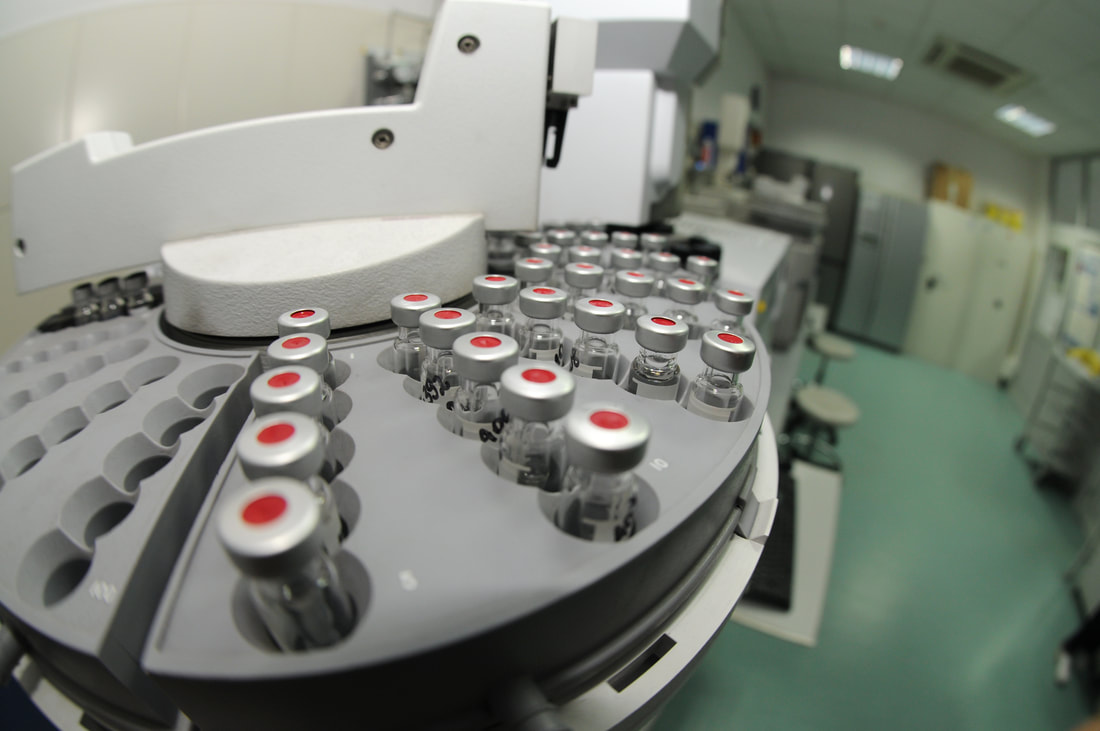Water Analysis ServicesHydrovida uses state-of-the-art equipment in testing for various analytes in virtually any water source. We perform water testing for Title 22 compliance for potable water and wastewater discharge requirements. We perform water analysis services that can comply to various different standards such as AAMI TIR34, and many others. Contact us to day for more information on our water analysis capabilities.
|
Unknown Sample Analysis Services
|
Water is known as the universal solvent due to its unmatched ability to dissolve and suspend millions of different compounds. This fundamental property of water creates a seemingly endless array of unknown compound issues in water purification processes. Hydrovida has expert laboratory personnel that are very experienced in deciphering the chemical composition of unknown compounds using a variety of different techniques. It is important to accurately predict and understand typical problematic compounds that are common to a specific type of water. Being able to predict potential troublesome compounds significantly helps to implement the proper chemistry in your system to prevent the thereby avoiding very costly system shut downs and component replacements.
|
Filtration Study AnalysisSurface water samples with competitor coagulant (left) and Hydrovida coagulant (right)
|
Hydrovida is dedicated to helping clients turn stubborn, poor quality water into the best quality possible. Our laboratory personnel can perform a variety of different tests on a water sample that requires remediation or treatment for either water reuse or discharge. Hydrovida's goal is to help all our clients be as environmentally friendly with the smallest pollution footprint possible in concern to their wastewater production, feed water processing or water reuse applications. Our filtration study analysis can help determine necessary pretreatment prior to RO, optimal coagulant dosing, or other various chemical treatment to make the best water quality attainable for our clients.
Contact us to get help with your water. We are fervently pursuing ways to help our customers clean their water to help save our fragile environment. |
Hydrovida Laboratory Testing Capabilities
Elemental Map Imaging
Hydrovida's Elemental Map Imaging combines state-of-the-art Scanning Electron Microscopy imaging techniques with proprietary mapping software to provide a spatial distribution of the elemental composition and complexion of unknown samples. Areas showing higher intensity of color correlate to higher concentrations of the element in that area. Elemental map imaging is extremely useful in determining fouling issues and complex ion formation of scales or other problematic foulants.
Hydrovida's Elemental Map Imaging combines state-of-the-art Scanning Electron Microscopy imaging techniques with proprietary mapping software to provide a spatial distribution of the elemental composition and complexion of unknown samples. Areas showing higher intensity of color correlate to higher concentrations of the element in that area. Elemental map imaging is extremely useful in determining fouling issues and complex ion formation of scales or other problematic foulants.
|
|
Scanning Electron Microscopy (SEM)
A Scanning Electron Microscope (SEM) is a type of electron microscope that produces high resolution image on the nanoscale level by using a high-intensity beam of electrons emitted onto a sample. This technique shows high quality images of the topography, texture or crystal structure of any given sample. The images are black and white, as the electrons detected in the microscope do not emit in the color spectrum. This technique can be used to examine suspected impurities or imperfections, or the geometric structure of a sample on a very small scale. |

Attenuated Total Reflectance Infrared (ATR-IR) Spectroscopy
Hydrovida uses Attenuated Total Reflectance Infrared (ATR-IR) spectroscopy to examine the type of bonds present in the unknown sample by use of infrared radiation (heat). Infrared radiation is emitted onto the sample, which causes bonds of molecules to become excited and vibrate. These vibrations by molecules can then be measured and quantified by a detector. The detected vibrations are then run through a mathematical transformation called a Fourier transform and are displayed as bands on a spectrum. In essence, these bands emitted are a fingerprint for specific types of bonds of which are characterized by intensity, absorbance location and sharpness. This technique can be used to determine overall purity of a sample by comparing the spectra of a known standard with the sample being analyzed.
Hydrovida uses Attenuated Total Reflectance Infrared (ATR-IR) spectroscopy to examine the type of bonds present in the unknown sample by use of infrared radiation (heat). Infrared radiation is emitted onto the sample, which causes bonds of molecules to become excited and vibrate. These vibrations by molecules can then be measured and quantified by a detector. The detected vibrations are then run through a mathematical transformation called a Fourier transform and are displayed as bands on a spectrum. In essence, these bands emitted are a fingerprint for specific types of bonds of which are characterized by intensity, absorbance location and sharpness. This technique can be used to determine overall purity of a sample by comparing the spectra of a known standard with the sample being analyzed.
|
Gas Chromatography-Mass Spectrometry (GC-MS)
Gas chromatography-mass spectrometry (GC-MS) is a technique that utilizes a gas chromatograph and a mass spectrometer to determine the presence of a molecule or compound that is dissolved in a medium. Industries such as pharmaceutical widely use GC-MS as a purity tool to help determine if impurities or unwanted compounds are present in their final products. GC-MS is extremely sensitive and can find impurities or compounds down to the parts per trillion level. Hydrovida utilizes GC-MS along with its extensive library of compounds to compare an unknown material to in identifying an unknown compounds for our clients. |





